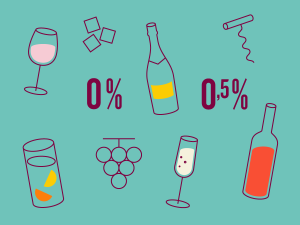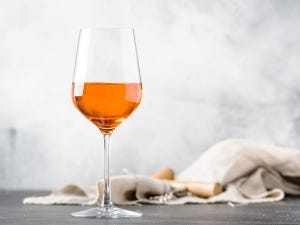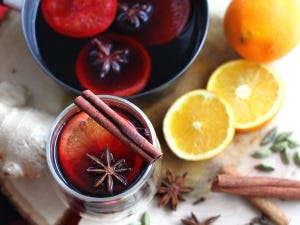Chardonnay
Origin : Burgundy
Main characteristics: round texture; aromas: toasted bread, butter, apple, pear.
Good to know: versatile, it adapts to different climates. It is the most common white grape variety in the world. In France, in Chili, in California, Chardonnay is the passion of winemakers and a delight to our taste buds.
Often aged in oak barrels, this process confers upon it woody and vanilla notes, as well as an even more voluptuous texture.
To discover a single-variety Chardonnay, we recommend the 2010 RH Phillips California Chardonnay. This Californian wine is marked by subtle aromas of grilled sesame. AROMATIC AND MELLOW, it has a pleasant freshness that will be the toast of your moments on the terrace. For maximum flavour, try it with a grilled brie.
Sauvignon blanc
Origin : contested. History indicates origins in Bordeaux.
Main characteristics: citrus notes, like pink grapefruit, aromas of freshly cut herbs.
Good to know: Wines made with 100% Sauvignon blanc are generally consumed early, because of their freshness.
Sauvignon Blanc is, after Chardonnay, the most cultivated wine in the world. Its reputation was forged as a single-variety wine in the Loire Valley, in Sancerre. Yet Sauvignon blanc from New Zealand has created an enviable place for itself, and rivals the best Sauvignon blancs of Sancerre, Pouilly-Fumé and Menetou-Salon in the Loire Valley.
Our suggestion for a New Zealand Sauvignon blanc is this 2011 Stoneleigh Marlborough Sauvignon blanc. This FRUITY AND VIBRANT wine has a powerful bouquet of freshly cut herbs and asparagus. As is often the case with this grape, it has a lovely, refreshing acidity on the palate. Savour it with sushi.
Riesling
Origin : Rhine.
Main characteristics:fruity, distinguished and mineral (aromas of gasoline).
Good to know: Riesling is the king of German grape varieties from the Alsace region.
Riesling is often wrongly considered to be the grape variety that yields the sweetest wines. Yet, depending on where it comes from, it offers dry and complex wines, like those found often in Alsace. A little known fact, the typical aromas of citrus, green apple and flowers are complemented by the mineral notes that can often evoke gasoline. Riesling is also used as a blend with late harvested grapes and ice wines, which makes it a universal variety that lends itself to many different usages.
It’s difficult to talk about Alsace without talking about Riesling. That’s why our suggestion is an Alsatian wine, the Léon Beyer Riesling. It has a delicate bouquet of citrus aromas, and it leaves a lively acidity and a supple texture on the palate. It’s an excellent choice to pair with seafood.
And to discover this winning trio? One of the pleasures of tasting wine is comparing the same grape variety coming from different regions. This is far and away the best way to discover all the different aspects of the same unique grape. Happy tasting!
-
Inspiration
(810)
- Profiles (201)
- Interviews (85)
- Share (325)
- Trends (67)
- Tasting and service (51)
- Production methods (21)
- Conservation (5)
- Wine cultivation (27)
- Pairings and Taste Tags (26)
- The SAQ is here (53)
-
About us
(73)
- Press releases (60)
- Career (5)
- Clarifications (8)
- Sustainable development (21)
 Access to SAQ Inspire personalized services and store inventories are unavailable at the moment.
Access to SAQ Inspire personalized services and store inventories are unavailable at the moment. Free in-store delivery with purchases of $75+ in an estimated 3 to 5 business days.
Free in-store delivery with purchases of $75+ in an estimated 3 to 5 business days. 
















